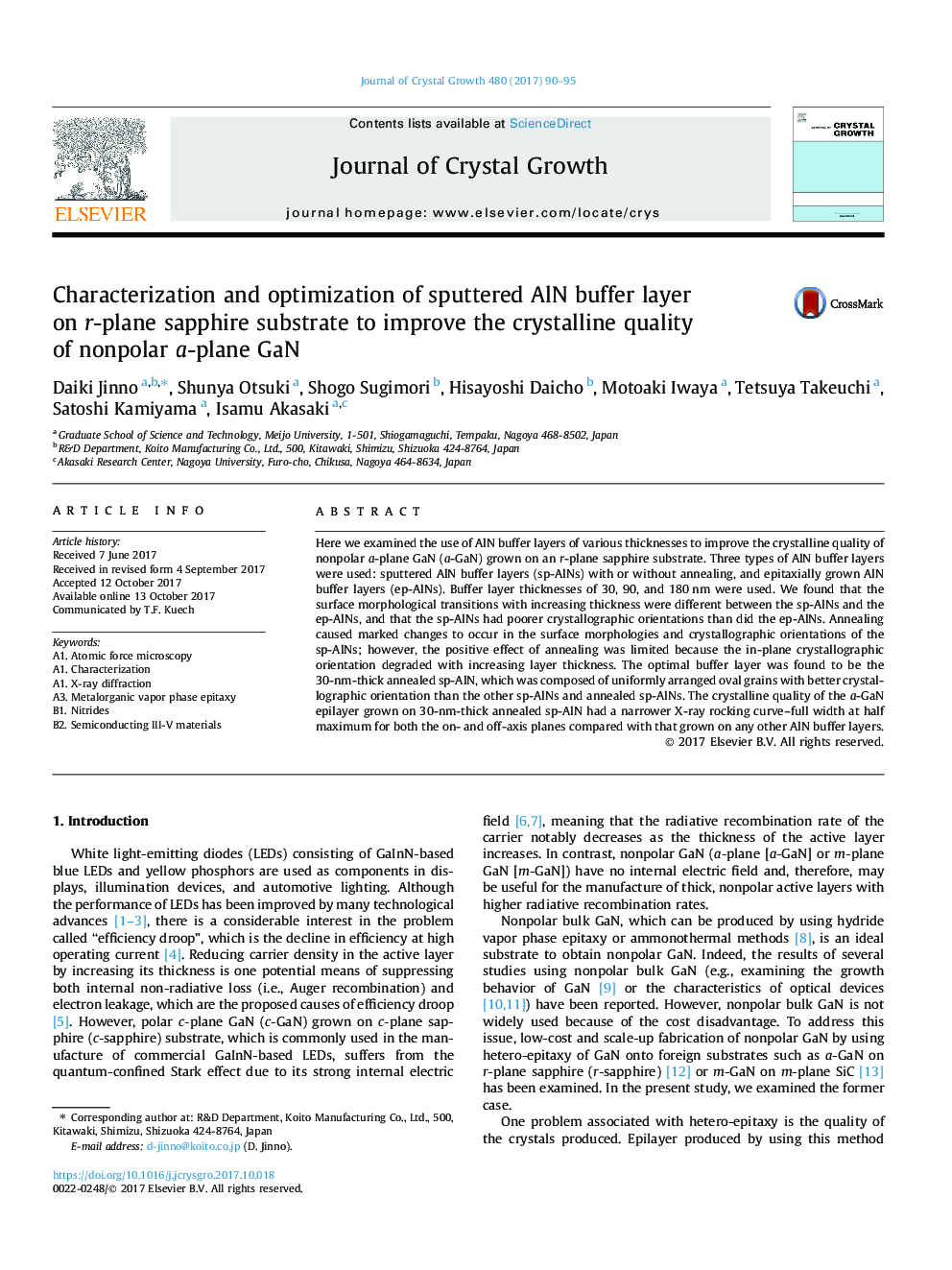| Article ID | Journal | Published Year | Pages | File Type |
|---|---|---|---|---|
| 8149148 | Journal of Crystal Growth | 2017 | 6 Pages |
Abstract
Here we examined the use of AlN buffer layers of various thicknesses to improve the crystalline quality of nonpolar a-plane GaN (a-GaN) grown on an r-plane sapphire substrate. Three types of AlN buffer layers were used: sputtered AlN buffer layers (sp-AlNs) with or without annealing, and epitaxially grown AlN buffer layers (ep-AlNs). Buffer layer thicknesses of 30, 90, and 180â¯nm were used. We found that the surface morphological transitions with increasing thickness were different between the sp-AlNs and the ep-AlNs, and that the sp-AlNs had poorer crystallographic orientations than did the ep-AlNs. Annealing caused marked changes to occur in the surface morphologies and crystallographic orientations of the sp-AlNs; however, the positive effect of annealing was limited because the in-plane crystallographic orientation degraded with increasing layer thickness. The optimal buffer layer was found to be the 30-nm-thick annealed sp-AlN, which was composed of uniformly arranged oval grains with better crystallographic orientation than the other sp-AlNs and annealed sp-AlNs. The crystalline quality of the a-GaN epilayer grown on 30-nm-thick annealed sp-AlN had a narrower X-ray rocking curve-full width at half maximum for both the on- and off-axis planes compared with that grown on any other AlN buffer layers.
Keywords
Related Topics
Physical Sciences and Engineering
Physics and Astronomy
Condensed Matter Physics
Authors
Daiki Jinno, Shunya Otsuki, Shogo Sugimori, Hisayoshi Daicho, Motoaki Iwaya, Tetsuya Takeuchi, Satoshi Kamiyama, Isamu Akasaki,
